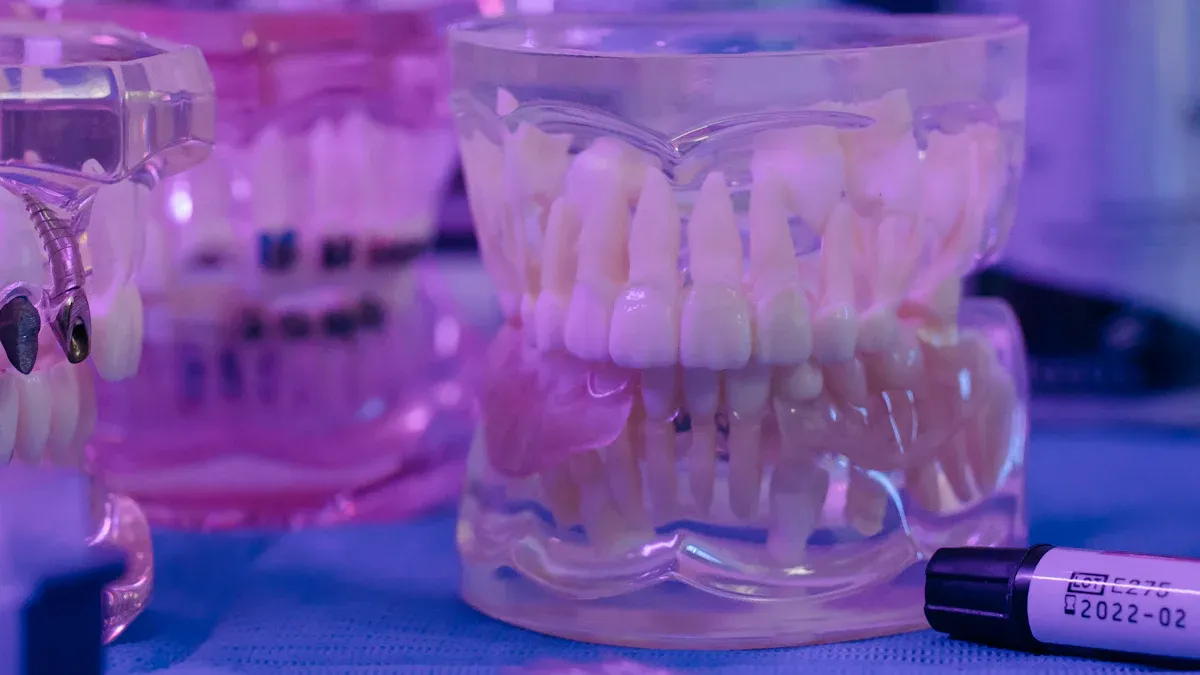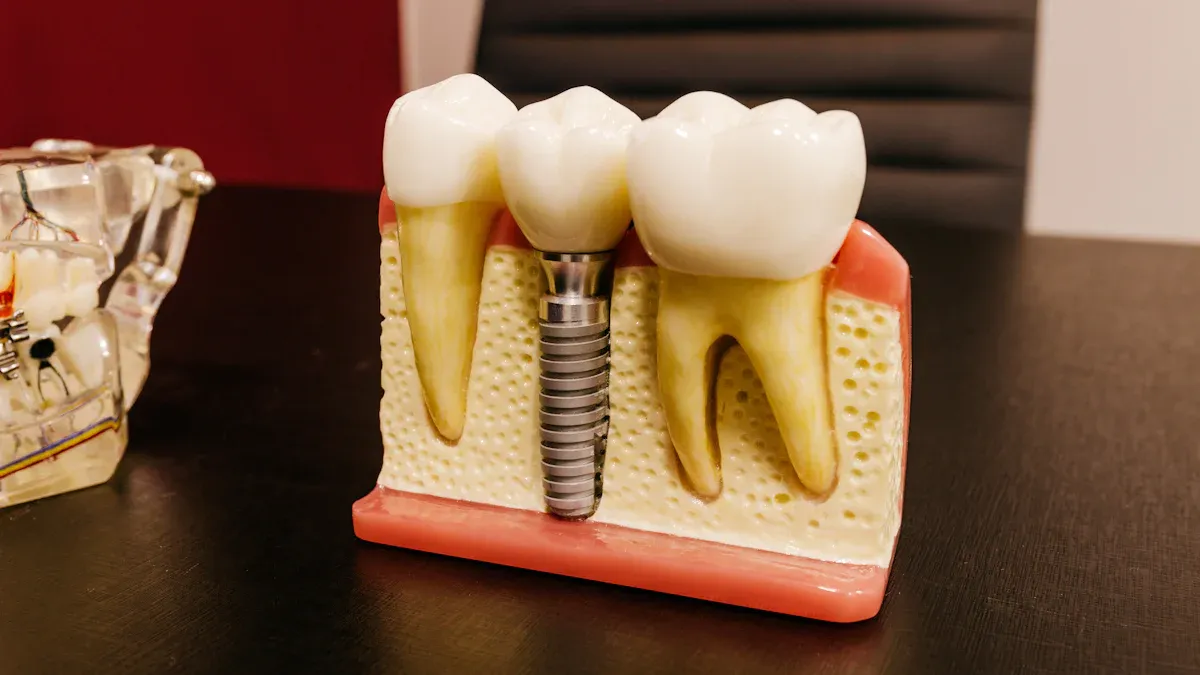
TAC Coating, also known as Titanium Aluminum Carbon coating, is transforming the field of medical implants by significantly improving their performance. This advanced coating enhances compatibility with human tissue, minimizing the risk of rejection. Unlike conventional materials, TAC Coating offers a unique combination of biocompatibility and mechanical strength, ensuring implants are both safer and more durable. Additionally, innovative solutions such as SIC COATING, CVD SIC COATING, and CVD TAC COATING are playing a crucial role in advancing this technology further.
Key Takeaways
- TAC Coating makes medical implants safer by helping the body accept them, lowering rejection risks, and speeding up healing.
- Its strong and long-lasting material helps implants handle daily use, making replacements less needed and keeping patients safer.
- TAC Coating works well for bone, tooth, and heart implants and might be useful in new medical tools too.
Understanding TAC Coating
Definition and Composition
TAC Coating, short for Titanium Aluminum Carbon coating, is a specialized material designed to improve the performance of medical implants. You might wonder what makes this coating so unique. Its composition combines titanium, aluminum, and carbon atoms in a precise ratio, creating a thin yet robust layer. This layer offers exceptional properties, including high biocompatibility and mechanical strength.
Did you know? The titanium in TAC Coating ensures compatibility with human tissue, while aluminum and carbon contribute to its durability and resistance to wear.
The coating’s molecular structure allows it to bond seamlessly with implant surfaces. This bonding reduces the risk of implant rejection and enhances the integration of the implant with surrounding tissues. By using TAC Coating, manufacturers can create implants that are safer and longer-lasting.
Application Techniques
Applying TAC Coating to medical implants involves techniques avancées that ensure uniform coverage and optimal performance. You’ll find that two primary methods dominate this process: Physical Vapor Deposition (PVD) and Chemical Vapor Deposition (CVD).
-
Physical Vapor Deposition (PVD):
This technique uses a vacuum chamber to deposit the coating material onto the implant surface. The titanium, aluminum, and carbon atoms are vaporized and then condensed onto the implant, forming a thin, even layer. PVD is ideal for achieving high precision and consistency. -
Chemical Vapor Deposition (CVD):
CVD involves chemical reactions to deposit the coating. In this process, gaseous precursors react on the implant surface, creating the TAC Coating layer. This method is particularly effective for complex implant shapes, ensuring thorough coverage.
| Technique | Advantages | Best for |
|---|---|---|
| Physical Vapor Deposition (PVD) | High precision and uniformity | Flat or simple surfaces |
| Chemical Vapor Deposition (CVD) | Excellent coverage for complex shapes | Intricate implant designs |
Both techniques require careful control of temperature and pressure to achieve the desired coating properties. By selecting the appropriate method, manufacturers can tailor the TAC Coating to meet specific implant requirements.
Benefits of TAC Coating for Medical Implants

Biocompatibility and Tissue Integration
When it comes to medical implants, biocompatibility is crucial. You want an implant that works harmoniously with your body, not one that triggers adverse reactions. TAC Coating excels in this area by creating a surface that encourages tissue integration. This means your body is more likely to accept the implant, reducing the risk of rejection or inflammation.
The titanium in TAC Coating plays a key role here. It interacts naturally with human tissue, promoting cell adhesion and growth. This helps the implant bond with surrounding tissues, making it feel like a natural part of your body. Imagine an orthopedic implant that not only supports your bones but also becomes a seamless extension of them. That’s the power of TAC Coating.
Tip: Faster tissue integration can lead to quicker recovery times and improved patient outcomes.
Additionally, the smooth and uniform surface provided by TAC Coating minimizes bacterial adhesion. This reduces the risk of infections, which is a common concern with medical implants. By choosing implants with this advanced coating, you’re opting for a safer and more reliable solution.
Mechanical Strength and Durability
Medical implants face constant stress and wear. Whether it’s a hip replacement or a dental implant, durability is non-negotiable. TAC Coating enhances the mechanical strength of implants, ensuring they can withstand daily use without compromising performance.
The combination of titanium, aluminum, and carbon creates a robust layer that resists wear and tear. You’ll find that implants with TAC Coating maintain their integrity even under challenging conditions. For example, an implant in a weight-bearing joint like the knee must endure significant pressure. Thanks to TAC Coating, it can handle this stress while maintaining its functionality.
Another advantage is its resistance to corrosion. Implants are exposed to bodily fluids, which can cause traditional materials to degrade over time. TAC Coating acts as a protective barrier, preventing corrosion and extending the lifespan of the implant.
| Feature | Benefit |
|---|---|
| High mechanical strength | Withstands stress and pressure |
| Wear resistance | Reduces the need for replacements |
| Corrosion resistance | Ensures long-term performance |
By improving both strength and durability, TAC Coating not only enhances the implant’s performance but also provides peace of mind. You can trust that your implant will last, reducing the need for frequent replacements or repairs.
Applications of TAC Coating in Healthcare

Orthopedic and Dental Implants
TAC Coating has revolutionized orthopedic and dental implants by improving their functionality and reliability. You’ll find that orthopedic implants, such as hip and knee replacements, benefit greatly from this coating. It enhances their ability to integrate with bone tissue, reducing the risk of implant failure. The coating’s durability ensures these implants can withstand the constant stress of movement and weight-bearing activities.
Dental implants also gain significant advantages from TAC Coating. The coating promotes faster integration with jawbone tissue, which is essential for stability and long-term success. Its smooth surface minimizes bacterial adhesion, lowering the risk of infections. Imagine a dental implant that not only restores your smile but also lasts for years without complications. That’s the promise of TAC Coating in dental applications.
Note: TAC Coating reduces the need for frequent replacements, saving you time and money while improving your quality of life.
Emerging Medical Applications
The versatility of TAC Coating opens doors to innovative medical applications. You’ll see its potential in cardiovascular devices like stents, where biocompatibility is critical for preventing blood clot formation. The coating’s corrosion resistance ensures these devices remain functional in the challenging environment of the circulatory system.
Another exciting area is its use in prosthetics. TAC Coating enhances the durability of prosthetic joints and limbs, making them more reliable for daily use. Researchers are also exploring its application in bioelectronics, such as implantable sensors and drug delivery systems. These devices require materials that are both strong and compatible with human tissue, making TAC Coating an ideal choice.
Tip: The ongoing research into TAC Coating could lead to breakthroughs in personalized medicine, offering solutions tailored to individual needs.
TAC Coating transforms medical implants by combining biocompatibility with strength. It enhances safety, boosts performance, and extends implant longevity. You benefit from faster recovery and fewer complications. Its potential to revolutionize healthcare is immense, paving the way for advanced, personalized medical solutions that improve lives.
FAQ
What makes TAC Coating different from other implant coatings?
TAC Coating combines biocompatibility with exceptional strength. Its unique composition of titanium, aluminum, and carbon ensures better tissue integration and long-lasting durability.
Can TAC Coating reduce implant rejection?
Yes, it minimizes rejection risks. The titanium in TAC Coating promotes natural tissue bonding, making implants more compatible with your body.
Is TAC Coating suitable for all types of implants?
TAC Coating works well for orthopedic, dental, and cardiovascular implants. Its versatility also supports emerging applications like prosthetics and bioelectronics.
Tip: Always consult your healthcare provider to determine the best implant options for your needs.


